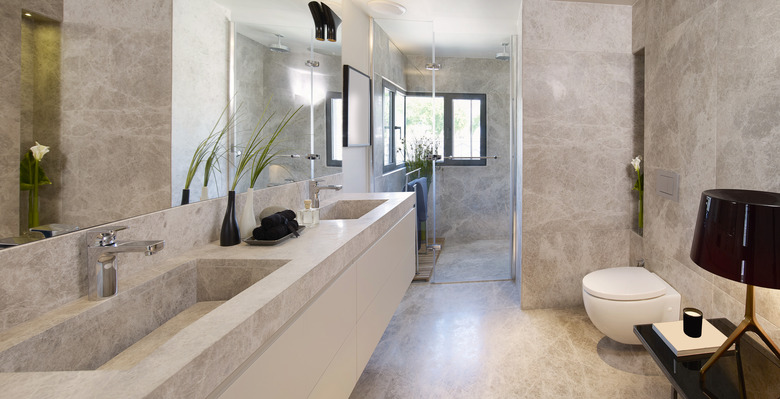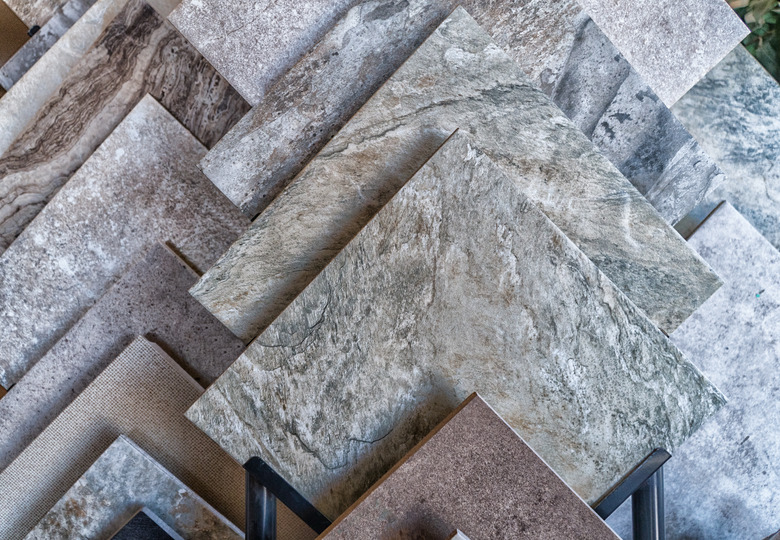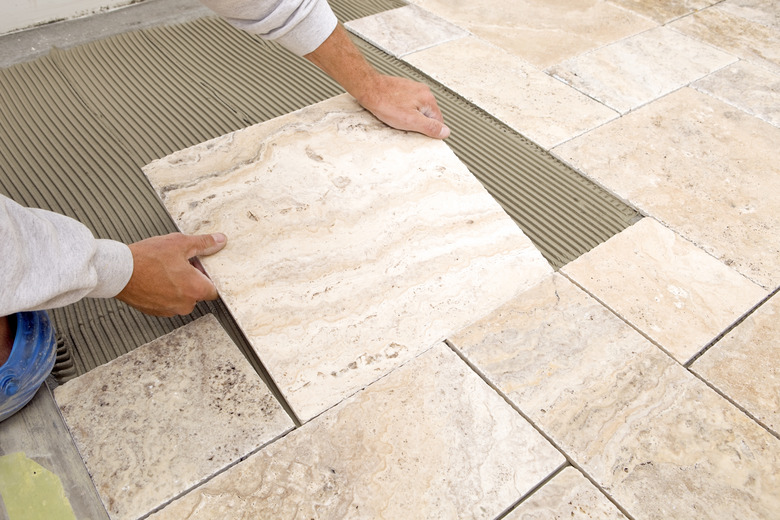Granite Tile: A Homeowner's Tile Flooring Guide
Granite tile is durable and luxurious and makes a great complement for contemporary decor. While granite is a popular choice for bathroom and kitchen countertops and backsplashes, it is also an attractive option for floors. Once installed, it is easy to clean and maintain. Granite can be expensive, but it adds value to any home and will last for years to come.
The Origin and Creation of Granite Tile
Granite is an igneous rock made from magma that cools and solidifies underground in a high-pressure process. Sourced from quarries around the world, cutting equipment drills holes around it in shallow points in the earth to create transportable blocks. Blasting engineers then place explosives in the holes to generate a blast just strong enough to separate the granite from its location but not destroy it. Cranes then lift the blocks and load them into trucks to take them to a stone-cutting facility where they will become granite slabs or tiles.
As with other types of natural stone tiles, granite varies in quality, appearance and porosity. Even if the stone blocks come from the same quarry, no two are alike. There are three grades that indicate the relative quality and price of granite:
- Level 1, Entry-Level Granite: Also known as "commercial" or "builder's grade," this is the lowest-quality granite available. At 3/8 inch, it generally has a thinner cut and needs plywood backing for support. Level 1 granite usually comes from China and has a simple design and standard colors.
- Level 2, Mid-Grade Granite: This stone tile is about 3/4-inch thick and has more variety in its design, colors and markings. Brazil and India generally export Level 2 granite.
- Level 3+, High-Grade Granite: This is the finest-quality stone and the most expensive due to the rarity of its source and appearance. With a thickness of 3/4 inch or more, it comes in unique colors, markings and designs.
The Pros and Cons of Granite Flooring
When it comes to flooring, there are pros and cons to the materials available. However, with so many variations in color and pattern, granite offers a unique, luxurious look that other types of flooring can't quite match.
The pros:
- Granite is known for its durability. Granite is the perfect material for heavily trafficked areas of the home, as it is resistant to stains, dents or scratches. It often outlasts many other types of materials.
- Granite tiles are water-resistant. Unlike other flooring options, granite will protect your subfloor due to its impenetrable surface.
- Granite is hypoallergenic. It doesn't retain smells and moisture or carry bacteria. By regularly sweeping and mopping, you can significantly reduce the allergens in your home, such as dust, dirt and pet dander.
- Granite tile is cooling. Due to its porous nature, granite keeps you cool in high temperatures as it draws heat away from your body.
The cons:
- Granite is extremely heavy. Before installing new tiles, make sure the floor can withstand their weight by consulting a professional, as one tile can weigh as much as 18 pounds.
- Tile installation can be tough. It is possible to install granite floor tile yourself, but it's not easy. One room can require thousands of pounds of tile. Before installation, you must make sure the floor is flat, as the tile can easily crack or break. Granite can also be a challenge to cut, and low-grade pieces are sometimes uneven, which makes using spacers difficult.
- It's slippery when wet. Polished granite may not be the safest choice in a home with seniors or small children. If you plan to use it in a bathroom or kitchen, it's a good idea to put down a rubber-backed rug or mat on the floor near water sources like a sink or bath.
- Granite can stain. Granite is porous and will soak up liquids that can stain it, including water. To prevent this, it is necessary to seal the tile and grout every two years.
Granite Tiles and Radon
According to the Environmental Protection Agency, much like any stone, granite has naturally occurring radioactive elements, the concentrations of which may vary from piece to piece even when dug from the same quarry. When certain radioactive elements decay, they emit radon, an odorless, colorless gas that may cause lung cancer. While it is unlikely that the radiation emitted from these materials will increase the radon level above what is normal in your home, you should know that no stone tile exists without some traces of it. If you have concerns about this, consult the tile supplier or manufacturer for more information on radon in granite flooring.
Installing and Maintaining Granite Tile Flooring
Granite tiles can be installed like most other types of tile, typically over cementboard underlayment (installed over wood subflooring) or on a concrete slab (with or without an uncoupling membrane). The tiles are adhered with thinset mortar. Cutting tiles is best done with a tile wet saw. After all of the tiles are down and the mortar has cured, the joints between tiles are filled with grout, which is allowed to cure before it is sealed. Granite tiles also should be sealed to prevent stains.
For general cleaning, dry mop and sweep granite tile floors once a day to keep them free of dust and debris. Deep-clean the tiles at least once a week but do not use ordinary household cleaners, as they can cause damage to the tile. Instead, purchase a cleaner for stone and tile floors. Also remember to clean grout with a nylon brush and wipe up spills as soon as you see them.
References
- Granite Gold: How To Care For Granite Tile Flooring
- BuildDirect: Granite Tile Installation: PRO or DIY?
- Floor Coverings International: Everything You Ever Wanted to Know About Granite Flooring
- Floor Coverings International: The Pros and Cons of Granite Flooring
- Arch City Granite & Marble: How Granite Countertops are Made? Journey from Quarry to your Kitchen
- Jon-Don: Stone Floor and Grout Sealing


